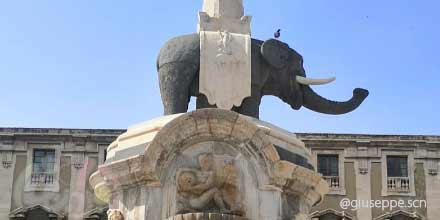Curiosities about Liotru

Giuseppe Scandura
Liotru, a Sicilian term to indicate elephant, is the symbol of the city of Catania and there are many curiosities about its history.
The statue of Liotru dominates the elephant fountain in Piazza Duomo.
It is said that the elephant statue was magically built by the magician Eliodoro who, according to the legend, after having carried out numerous and unfortunate feats on the back of his magical elephant, he was burned alive inside the Achillian Baths in 778 AD The term “Liotru” seems to derive from the alteration of the name "Eliodoro".
According to historical sources, the elephant statue has had various functions over the centuries. It is believed that the elephant statue was originally the object of worship in an oriental rites temple in the city. At the beginning of Christianity it was brought outside the city walls where it remained abandoned for centuries. It was later brought back to the city by the Benedictine fathers of the monastery of Sant’Agata and placed to adorn an ancient arch. In 1508, when the arch was pulled down, the elephant was placed on the façade of the new part of the building, with the following inscription: Ferdinandus. Hispaniae utriusque. Sicilye. Rege - Elephans erectus fuit to Cesare Jojenio - Justitiario - MDVII
After the earthquake of 1693, the elephant was abandoned again, until, in 1727, the Dutch Filippo d'Orville, finding himself passing through Catania, urged that it be raised together with the Egyptian obelisk that now surmounts it in the famous Piazza Duomo.
The Liotru is the symbol of the city of Catania only since 1239. Before then the symbol of Catania was San Giorgio. The people of Catania decided to change it following a series of revolts in order to pass from a simple domain of a bishop-count to a state-owned city. The first official attestation of the new symbol is due to a session of the Parliament which took place in Foggia in 1240.